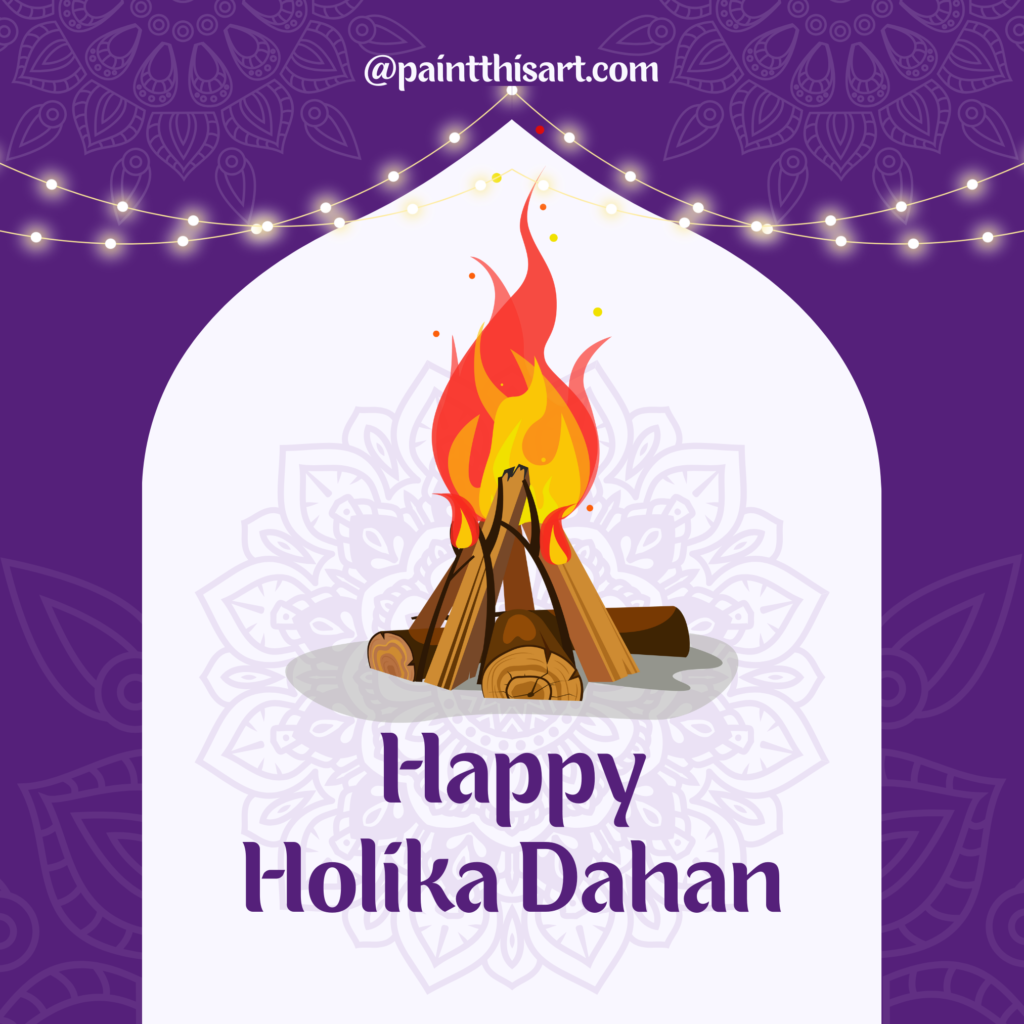Celebrating Holi 2025: A Festival of Colors, Joy, and Tradition
Holi, the vibrant festival of colors, is one of the most eagerly awaited celebrations in India and among Indian communities worldwide. In 2025, Holi will be celebrated on Friday, March 14th, marking a day of joy, unity, and cultural richness. For those planning ahead, the Holi 2025 date in India is firmly set in the Indian calendar as a time to immerse oneself in the spirit of the festival. But Holi is more than just a date on the calendar; it is a celebration of life, love, and the triumph of good over evil. In this blog post, we’ll explore the significance of Holi, its historical and cultural background, and how you can make the most of Holi 2025.

When is Holi 2025?
Holi is celebrated on the full moon day (Purnima) in the Hindu month of Phalguna, which typically falls in March. In 2025, Holi will be observed on March 14th. The festivities begin the evening before with Holika Dahan, a ritual bonfire that symbolizes the victory of good over evil. The main day of Holi, known as Rangwali Holi or Dhulandi, is when people come together to play with colors, dance, sing, and enjoy festive foods.
For those marking their calendars, the Holi 2025 date in India calendar is as follows:
- Holika Dahan: Thursday, March 13th, 2025 (evening)
- Rangwali Holi: Friday, March 14th, 2025
The Significance of Holi: A Festival of Colors and Unity
Holi is more than just a day to throw colored powder and water balloons. It is a festival deeply rooted in Indian culture, mythology, and tradition. The festival signifies the arrival of spring, the end of winter, and the blossoming of love and new beginnings. It is a time to forgive, forget, and renew relationships.
The festival is celebrated with immense enthusiasm across India, with each region adding its unique flavor to the festivities. From the lively Lathmar Holi in Uttar Pradesh to the musical Holi celebrations in Maharashtra, the festival is a beautiful tapestry of India’s cultural diversity.
The Historical and Cultural Background of Holi
The origins of Holi can be traced back to ancient Indian scriptures and legends. One of the most popular stories associated with Holi is the tale of Prahlad and Holika. Prahlad, a devout follower of Lord Vishnu, was saved from the evil intentions of his demoness aunt Holika, who tried to burn him alive. The bonfire lit during Holika Dahan symbolizes the burning of Holika and the triumph of good over evil.
Another legend linked to Holi is the divine love story of Radha and Krishna. It is believed that Lord Krishna, known for his playful nature, started the tradition of playing with colors by applying them to Radha and other gopis (milkmaids). This playful act of love and joy has since become an integral part of Holi celebrations.
Holi also has agricultural significance, as it marks the end of the winter harvest season and the beginning of spring. Farmers celebrate the festival to express gratitude for a bountiful harvest and pray for prosperity in the coming year.
How Holi is Celebrated Across India
Holi is celebrated with great fervor across India, and each region has its unique way of observing the festival. Here’s a glimpse of how Holi is celebrated in different parts of the country:
- North India:
In states like Uttar Pradesh, Rajasthan, and Delhi, Holi is celebrated with traditional fervor. The Lathmar Holi of Barsana and Nandgaon is particularly famous, where women playfully hit men with sticks, and men shield themselves. The streets come alive with music, dance, and colors. - West India:
In Maharashtra, Holi is celebrated with a focus on community bonding. People visit each other’s homes, exchange sweets, and play with colors. The festival is also marked by the breaking of the Matki (pot), a tradition inspired by Lord Krishna’s childhood antics. - East India:
In West Bengal and Odisha, Holi is known as Dol Jatra or Dol Purnima. It is celebrated with processions of Lord Krishna and Radha, accompanied by singing and dancing. People smear each other with colored powder and offer prayers. - South India:
In states like Tamil Nadu and Karnataka, Holi is celebrated on a smaller scale but with equal enthusiasm. People visit temples, offer prayers, and play with colors in a more subdued manner.
Eco-Friendly Holi: Celebrating Responsibly in 2025
As awareness about environmental issues grows, more people are opting for eco-friendly Holi celebrations. Traditional Holi colors were made from natural ingredients like turmeric, beetroot, and flowers. However, the use of synthetic colors has led to environmental and health concerns.
In 2025, let’s pledge to celebrate Holi in a way that respects nature and our health. Here are some tips for an eco-friendly Holi:
- Use natural, homemade colors made from flowers, herbs, and spices.
- Avoid water wastage by playing a dry Holi or using limited water.
- Say no to plastic balloons and opt for biodegradable alternatives.
- Celebrate with organic sweets and snacks to promote sustainability.
Holi 2025: A Time for Togetherness and Joy
Holi 2025 is not just a date on the calendar; it is an opportunity to reconnect with loved ones, embrace the spirit of unity, and celebrate the beauty of life. Whether you’re in India or abroad, the festival offers a chance to experience the joy of togetherness and the vibrancy of Indian culture.
As we prepare to celebrate Holi 2025, let’s remember the true essence of the festival: spreading love, happiness, and positivity. So, mark your calendars for March 14th, 2025, and get ready to immerse yourself in the colors of Holi.
Conclusion
Holi is a festival that transcends boundaries and brings people together in a celebration of life and joy. In 2025, as we celebrate Holi on March 14th, let’s embrace the traditions, stories, and values that make this festival so special. Whether you’re playing with colors, enjoying festive delicacies, or simply spending time with loved ones, Holi is a time to cherish the moments that make life colorful.
So, as the Holi 2025 date in India calendar approaches, let’s come together to celebrate this beautiful festival with enthusiasm, responsibility, and a heart full of joy. Happy Holi 2025!
| Event | Date | Day | Remarks |
|---|---|---|---|
| Holika Dahan | March 13, 2025 | Thursday | Celebrated on the evening before Holi, symbolizing the victory of good over evil. Bonfires are lit, and prayers are offered. |
| Rangwali Holi | March 14, 2025 | Friday | The main day of Holi, celebrated with colors, music, dance, and festive foods. People play with gulal (colored powder) and water. |
Holika Dahan 2025: Significance, Rituals, and Celebrations
Holika Dahan, also known as Chhoti Holi, is an integral part of the Holi festival and marks the beginning of the celebrations. In 2025, Holika Dahan will be observed on Thursday, March 13th, 2025, the evening before the main day of Holi (Rangwali Holi). This ritual holds deep cultural and religious significance and is celebrated with great enthusiasm across India.
What is Holika Dahan?
Holika Dahan is a traditional ritual where a bonfire is lit to symbolize the victory of good over evil. The ritual is rooted in the ancient legend of Prahlad and Holika from Hindu mythology. According to the story, the demon king Hiranyakashipu wanted to kill his son Prahlad, a devotee of Lord Vishnu. Hiranyakashipu’s sister, Holika, who was immune to fire, tricked Prahlad into sitting on a pyre with her. However, due to Prahlad’s unwavering devotion, he was saved by Lord Vishnu, while Holika was burned to ashes.

The bonfire lit during Holika Dahan represents the burning of Holika and the triumph of righteousness over evil.
When is Holika Dahan in 2025?
In 2025, Holika Dahan will be celebrated on Thursday, March 13th, 2025, in the evening. The timing for Holika Dahan is determined based on the Hindu lunar calendar, specifically during Purnima Tithi (full moon day) in the month of Phalguna.
Rituals and Traditions of Holika Dahan
Holika Dahan is observed with a series of rituals that vary slightly across regions but generally include the following:
- Preparation of the Bonfire:
- A few days before Holika Dahan, people collect wood, dried leaves, and other combustible materials to build a pyre.
- In some regions, an effigy of Holika is placed on top of the pyre to symbolize her burning.
- Timing of the Bonfire:
- The bonfire is lit after sunset, during the auspicious time known as Muhurat.
- In 2025, the exact timing for Holika Dahan will be determined based on the Hindu Panchang (calendar).
- Puja and Offerings:
- Before lighting the bonfire, a puja (prayer ceremony) is performed to seek blessings for prosperity and protection from evil.
- Offerings such as coconuts, sweets, and grains are made to the fire.
- Circumambulation (Parikrama):
- After the bonfire is lit, people walk around it (perform parikrama) while chanting prayers and hymns.
- This act symbolizes the purification of the mind and soul.
- Taking Ashes Home:
- In some traditions, people take a small amount of ash from the bonfire home, believing it brings good luck and protection.
Significance of Holika Dahan
Holika Dahan is not just a ritual but a reminder of the power of faith, devotion, and righteousness. It teaches us to stand firm in our beliefs, even in the face of adversity. The bonfire also symbolizes the burning of negativity, ego, and impurities, paving the way for a fresh start.
How to Celebrate Holika Dahan in 2025

Here are some ways to celebrate Holika Dahan in 2025 while respecting traditions and ensuring safety:
- Community Celebrations:
- Join your local community for the bonfire and puja ceremonies.
- Participate in singing bhajans (devotional songs) and sharing festive foods.
- Eco-Friendly Practices:
- Use natural materials for the bonfire and avoid burning plastic or harmful substances.
- Ensure the bonfire is lit in a safe and designated area to prevent accidents.
- Family Bonding:
- Gather with family and friends to perform the rituals together.
- Share stories about the significance of Holika Dahan and its cultural importance.
- Spiritual Reflection:
- Use this time to reflect on your life, let go of negativity, and set positive intentions for the future.
Conclusion
Holika Dahan 2025, on March 13th, is a time to honor tradition, celebrate the victory of good over evil, and prepare for the joyous festivities of Holi. As you gather around the bonfire, remember the deeper meaning behind the ritual and embrace the spirit of unity, faith, and renewal.
Let Holika Dahan 2025 be a memorable and meaningful start to your Holi celebrations!

